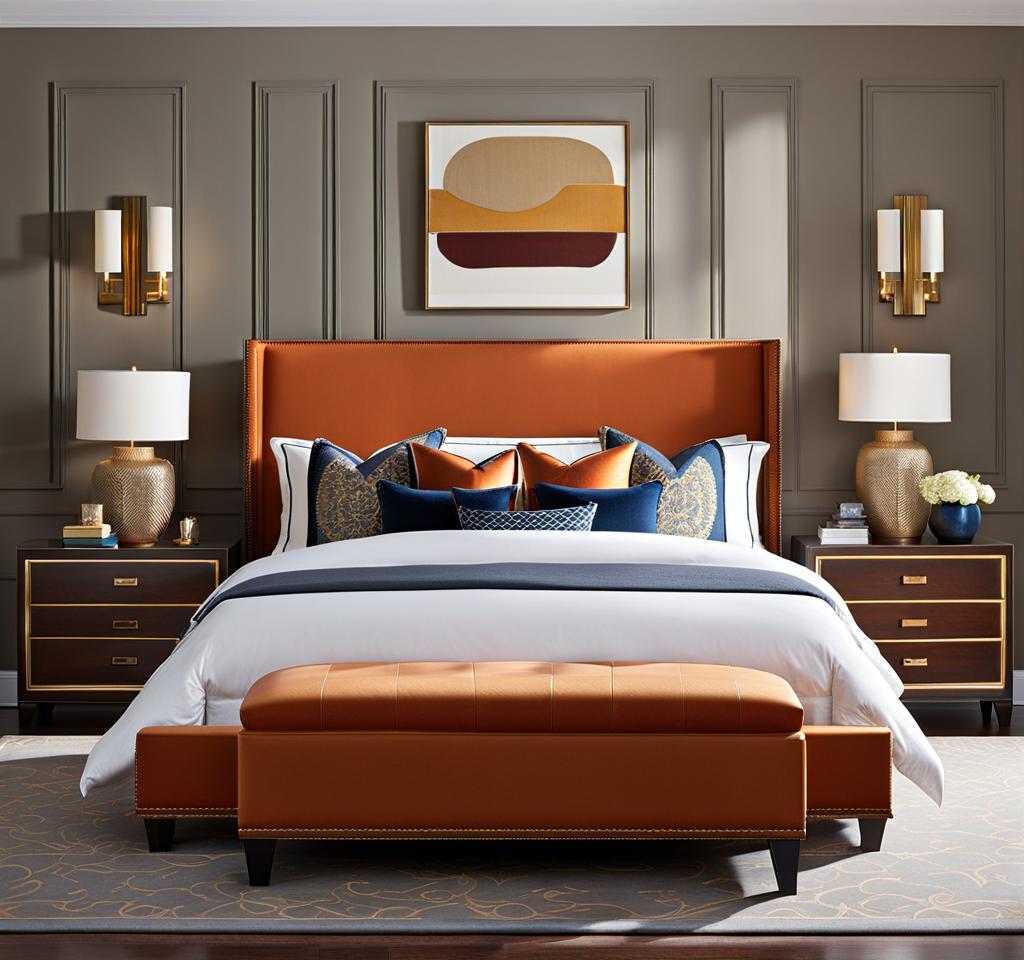As someone passionate about interior design, I firmly believe that the bedroom serves as a sanctuary – a personal oasis where we retreat to unwind and rejuvenate. Crafting a cozy ambiance within this intimate space is an art form, and arranging furniture plays a pivotal role in achieving that inviting atmosphere. Whether you’re starting from scratch or refreshing an existing layout, mastering the art of how to arrange bedroom furniture can transform your slumber quarters into a harmonious and comfortable haven.
Imagine waking up surrounded by a thoughtfully composed space that exudes warmth and tranquility. By carefully considering the placement of each piece, you can unlock a realm of relaxation that soothes the senses and inspires a sense of serenity. Join me as we dive into the captivating world of cozy bedroom furniture arrangements, where functionality meets aesthetic delight.
Bedroom Furniture Arranging 101: Planning Layouts for Comfort
Before embarking on the journey of arranging your bedroom furniture, it’s essential to lay the groundwork by understanding the fundamental principles. Comfortability should be the guiding star, as a well-rested mind and body are crucial for overall well-being. Envision a space that invites you to linger, whether it’s curling up with a good book or simply savoring a quiet moment of respite.
Start by assessing the room’s dimensions and identifying the focal point – this could be a cozy reading nook, a stunning window with a breathtaking view, or even the bed itself. Once you’ve established the centerpiece, strategically position the larger pieces, such as the bed and dressers, to create a harmonious flow. Remember, leaving ample space for comfortable navigation is key to achieving a sense of openness and tranquility.
Embrace Functional Zoning
Zoning refers to the division of spaces within a room, each designated for a specific purpose. In the bedroom, consider creating distinct zones for sleeping, dressing, and perhaps even a cozy seating area. By thoughtfully arranging your furniture to define these zones, you can streamline daily routines and cultivate a sense of order amidst the coziness.

Mastering Furniture Placement: Space Optimization Strategies
Once you’ve established the foundation, it’s time to delve into the art of strategic furniture placement. Maximizing the available space while maintaining a sense of openness is a delicate balance, but one that can be achieved with a few clever tips and tricks.
Firstly, assess the scale of each piece in relation to the room’s dimensions. Oversized furniture can overwhelm a small bedroom, while undersized pieces may appear dwarfed in a larger space. Strive for a harmonious equilibrium by selecting pieces that complement the room’s proportions, creating a visually appealing and inviting atmosphere.
Additionally, consider the flow of traffic within the space. Position larger pieces, such as dressers and armoires, against the walls, leaving ample room for unobstructed movement. This not only enhances the sense of spaciousness but also ensures a safe and comfortable environment for daily routines.
Cultivating Captivating Bedroom Ambiance through Strategic Arranging
Transcending mere functionality, the art of arranging bedroom furniture extends to cultivating an ambiance that resonates with your personal style and preferences. Whether you gravitate towards a cozy and rustic aesthetic or a sleek and modern vibe, thoughtful furniture placement can bring your vision to life.
For those seeking a warm and inviting atmosphere, consider clustering pieces in a conversational arrangement, creating an intimate seating area that beckons for quiet moments of connection or solitude. Alternatively, if minimalism is your design mantra, adopt a more streamlined approach, aligning furniture along the walls and embracing negative space as a canvas for serenity.
Don’t be afraid to experiment with unconventional arrangements that challenge traditional norms. Perhaps positioning the bed at an angle or embracing an asymmetrical layout could infuse the space with a unique and captivating energy that reflects your individuality.
Harmonizing Bedroom Furniture: Creating Visual Flow and Balance
Achieving a cohesive and visually appealing bedroom sanctuary requires a harmonious interplay between the various furniture pieces. Visual flow and balance are the cornerstones of a successful arrangement, guiding the eye seamlessly throughout the space and creating a sense of equilibrium.
Start by identifying complementary pieces that share a common design language, whether it’s through their materials, colors, or stylistic elements. Strategically positioning these pieces in relation to one another can create a visually pleasing narrative that ties the entire room together.
Furthermore, consider incorporating recurring motifs or accents throughout the space, such as a consistent color palette or a recurring pattern. These subtle touches can unify the overall design, fostering a cohesive and inviting ambiance that feels intentional and well-thought-out.
While adhering to design principles is crucial, the true essence of a cozy bedroom lies in infusing it with your personal style and individuality. Your furniture arrangement should be a reflection of your unique tastes, preferences, and life experiences.
Embrace sentimental pieces that hold special meaning, whether it’s an heirloom dresser passed down through generations or a whimsical nightstand that sparks joy. These cherished items can serve as anchors, around which you can build a narrative that tells your story.
Additionally, don’t be afraid to incorporate unconventional or eclectic elements that challenge traditional norms. Perhaps a repurposed vintage trunk serves as a unique bedside table, or a vibrant statement piece adds a pop of personality to an otherwise understated space. By seamlessly blending these personal touches with thoughtful furniture arrangements, you can create a bedroom sanctuary that truly reflects your authentic self.

This is where you’ll find inspiration to create a stylish and beautiful dream home.